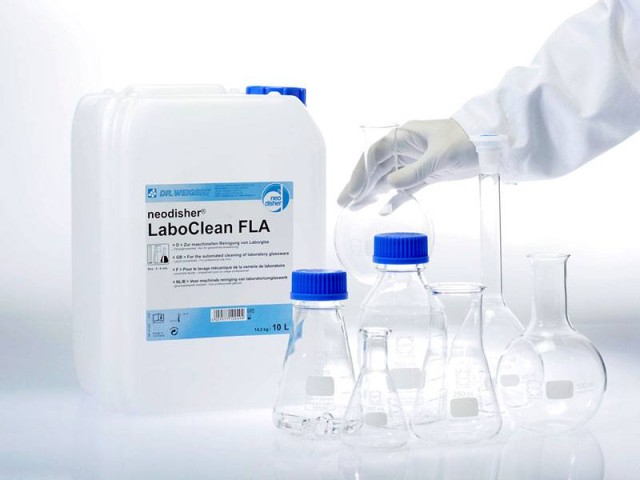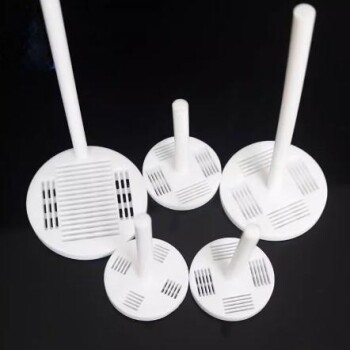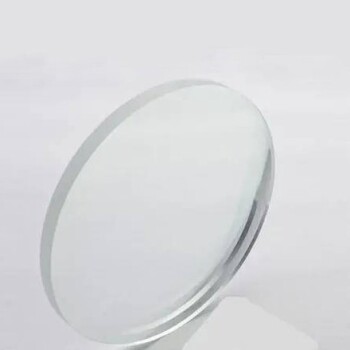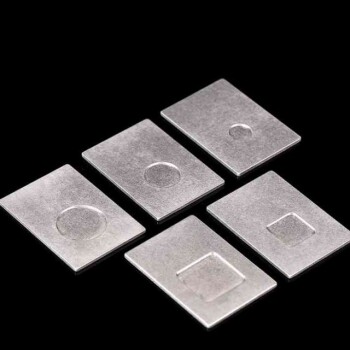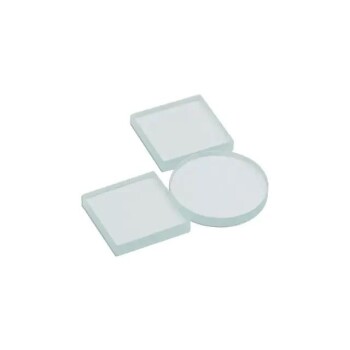Cleaning laboratory glassware isn't as simple as washing the dishes. Here's how to wash your glassware so that you won't ruin your chemical solution or laboratory experiment.
Cleaning Basics
It's generally easier to clean glassware if you do it right away. When detergent is used, it's usually one designed for lab glassware, such as Liquinox or Alconox. These detergents are preferable to any dishwashing detergent you might use on dishes at home.
Much of the time, detergent and tap water are neither required nor desirable. You can rinse the glassware with the proper solvent, then finish up with a couple of rinses with distilled water, followed by final rinses with deionized water.
How to Wash Out Common Lab Chemicals
- Water Soluble Solutions (e.g., sodium chloride or sucrose solutions)
- Rinse 3-4 times with deionized water then put the glassware away.
- Water Insoluble Solutions (e.g., solutions in hexane or chloroform)
- Rinse 2-3 times with ethanol or acetone, rinse 3-4 times with deionized water, then put the glassware away. In some situations other solvents need to be used for the initial rinse.
- Strong Acids (e.g., concentrated HCl or H2SO4)
- Under the fume hood, carefully rinse the glassware with copious volumes of tap water. Rinse 3-4 times with deionized water, then put the glassware away.
- Strong Bases (e.g., 6M NaOH or concentrated NH4OH)
- Under the fume hood, carefully rinse the glassware with copious volumes of tap water. Rinse 3-4 times with deionized water, then put the glassware away.
- Weak Acids(e.g., acetic acid solutions or dilutions of strong acids such as 0.1M or 1M HCl or H2SO4)
- Rinse 3-4 times with deionized water before putting the glassware away.
- Weak Bases (e.g., 0.1M and 1M NaOH and NH4OH)
- Rinse thoroughly with tap water to remove the base, then rinse 3-4 times with deionized water before putting the glassware away.
Related Products
- Custom Machined and Molded PTFE Teflon Parts Manufacturer for Laboratory ITO FTO Conductive Glass Cleaning Flower Basket
- Optical Ultra-Clear Glass Sheet for Laboratory K9 B270 BK7
- Custom PTFE Teflon Parts Manufacturer for Cleaning Racks
- Customizable XRD Sample Holders for Diverse Research Applications
- Float Soda-Lime Optical Glass for Laboratory Use
Related Articles
- How FTIR Pellet Press Works in Sample Preparation for Spectroscopy Analysis
- How To Clean Laboratory Glassware - Part 2
- PTFE Cleaning Racks: The Ultimate Guide to Cleaning and Drying Labware
- Revolutionize Your Spectroscopy Analysis with FTIR Pellet Press
- Glassware vs. Plasticware - Which is the Better Choice for Your Needs?
